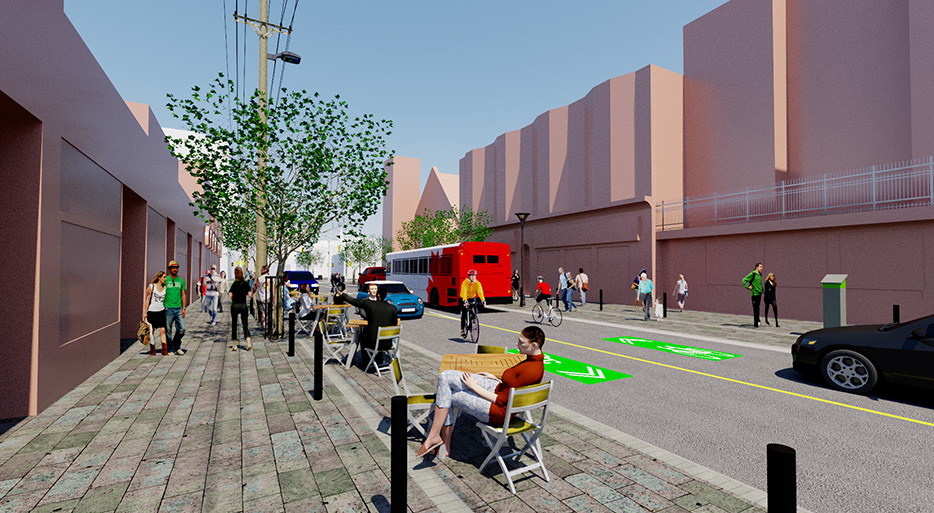City plans walkable Elgin
By Emma Davis
The City of Ottawa is redesigning Elgin Street as a pedestrian paradise with wider sidewalks and more outdoor seating, but plans to cut parking spaces has business owners worried.
The two-year renovation was outlined at a recent city hall open house and is part of a watermain and sewer pipe replacement project beginning in 2019.
“It’s about creating public spaces,” said Ronald Clarke, a manager at Parsons, the design firm for the plan, at the meeting.
“It’s not just about moving people. It’s about creating an important place in the city.”
The proposal reduces on-street parking spaces from 122 to 61 in favour of broader sidewalks and “flexible spaces” — stretches of road elevated to sidewalk-level that can be used for parking, bike racks or outdoor patios.
That worries many Elgin Street business owners, including Minoo Banaei of Bel Fiore flower shop. She said fewer parking spaces could make it more difficult for businesses to load and deliver products for shoppers.
“We need parking close to the shops,” she said. “People don’t have time to go park in city hall and come back to take boxes.”
The improvements were designed with the city’s Complete Streets policy in mind, which aims to accommodate pedestrians, cyclists and drivers equally, according to Somerset Coun. Catherine McKenney.
In the case of Elgin Street, she said, she hopes the changes transform the area into a destination rather than a roadway.
“For far too long the focus of Elgin Street has been (as) a transportation corridor, a place to move through to get somewhere else,” she said during the open house. “Streets that are designed as good places for people to be . . . are good for businesses along them, good for the homes surrounding them, and good for the city as a whole.”
Centretown resident Juan Pablo Lavin said he was pleased with the plan. After getting hit by a car on Elgin while longboarding to work, Lavin said he was happy to see designs that promoted cycling and walking instead of driving.
“When you have less parking spots, it makes it harder to get into the downtown and park your car, which ultimately reduces car users,” he said.
Other proposed improvements include lowering the speed limit to 30 km/h, adding more bus shelters and benches, and planting trees along the sidewalk. But other popular recommendations, such as burying power lines to free up sidewalk space, or adding a bike lane, aren’t part of the plan at this stage.
The improvements are also a huge step forward in ensuring a safe cycling environment, said Robb Barnes, managing director for environmental group Ecology Ottawa.
“There are other elements to the street design that will add to bike safety even if they aren’t immediately obvious — things like speed reduction,” he said. “The reduction in speed will contribute to a sense that Elgin Street is not primarily a car route.”
Before the plan is finalized, another working group will meet this month to discuss further improvements for the design, then the plans will be sent to the ciy’s transportation committee and then full council for approval.
In the meantime, Barnes said he is excited about Elgin’s upcoming transformation.
“Elgin is a once-in-a-generation opportunity to get one of the busiest, most bustling streets in Ottawa right,” he said.

